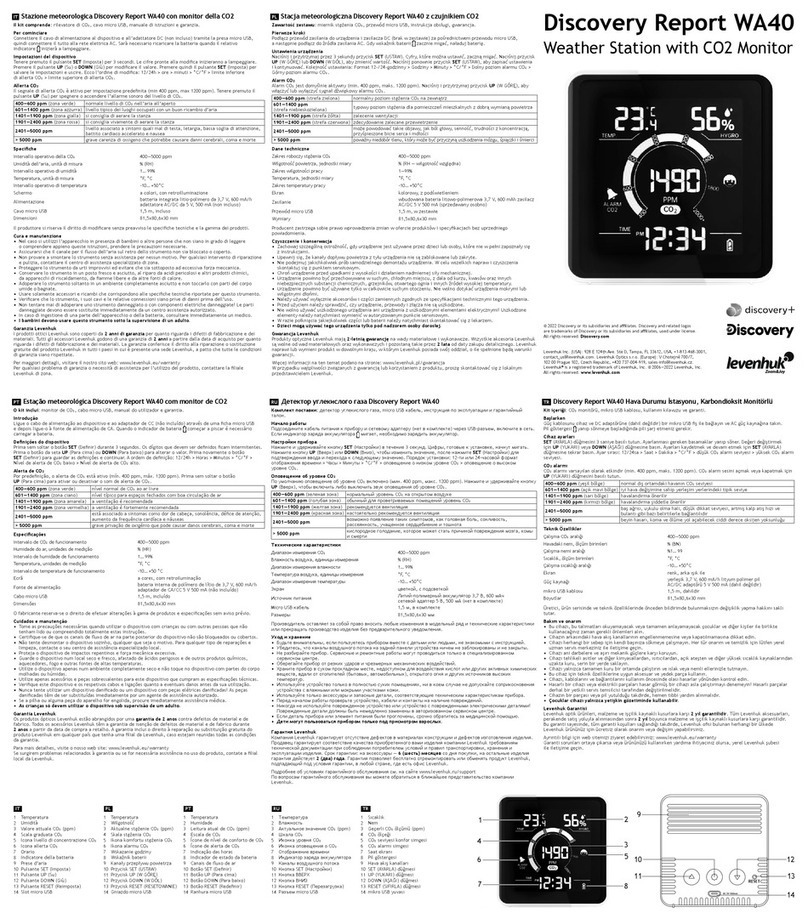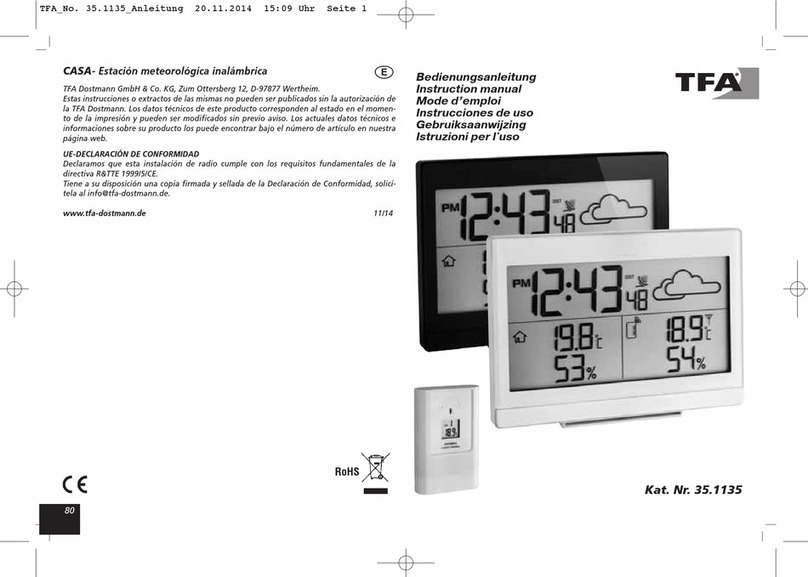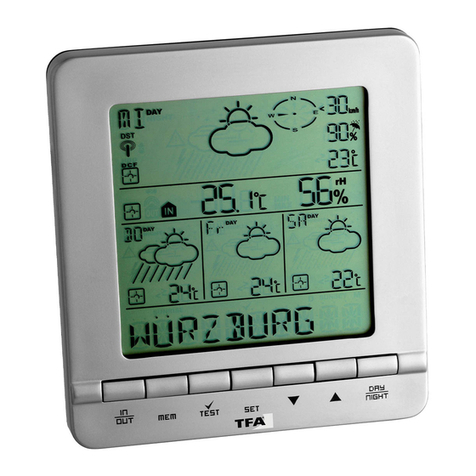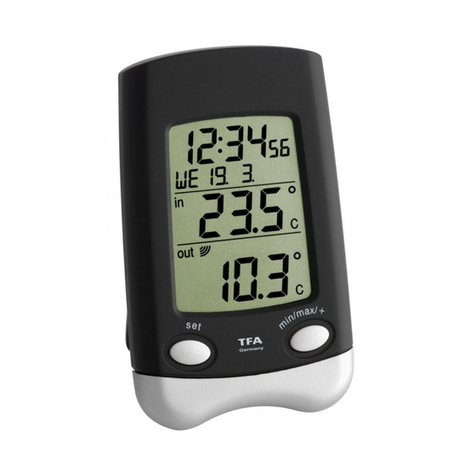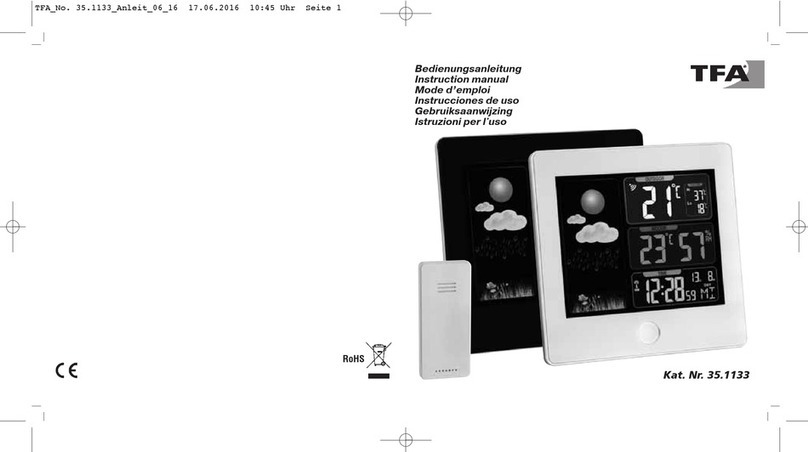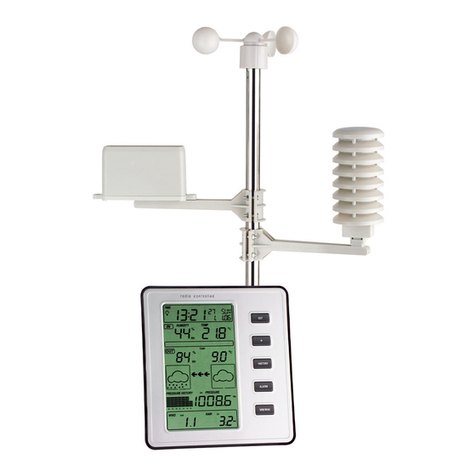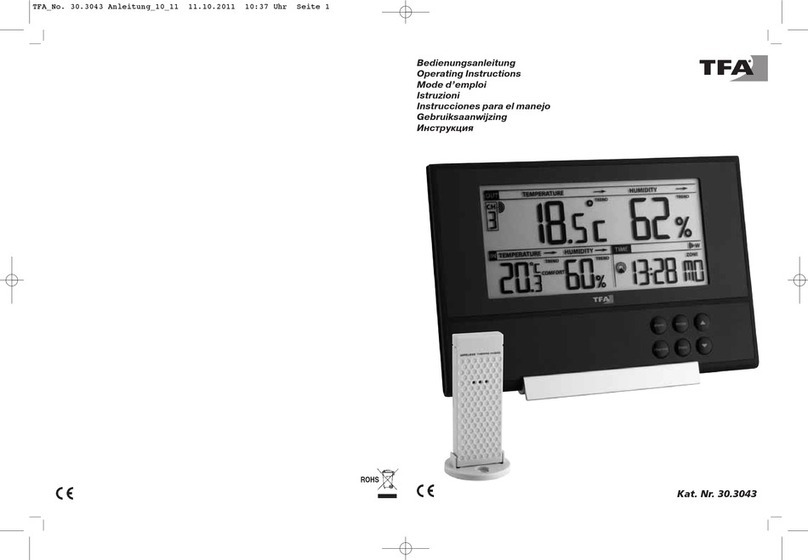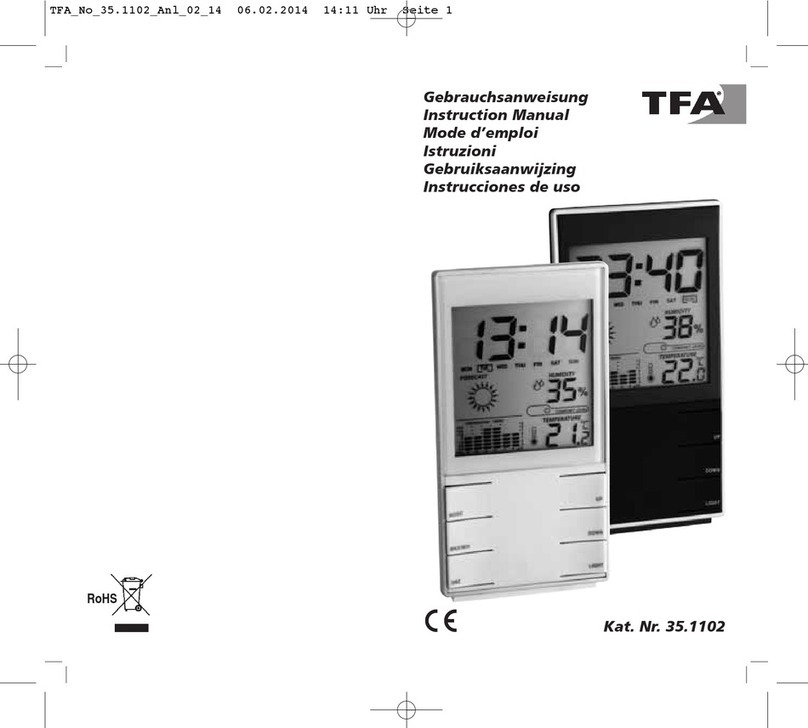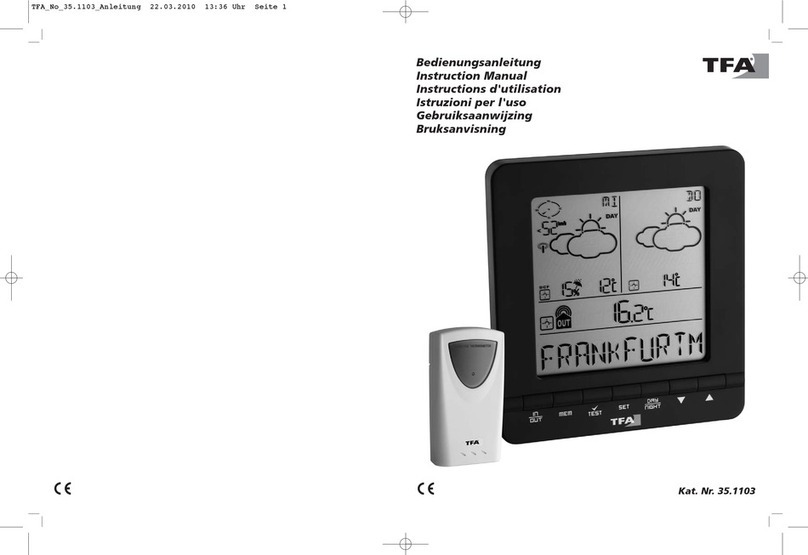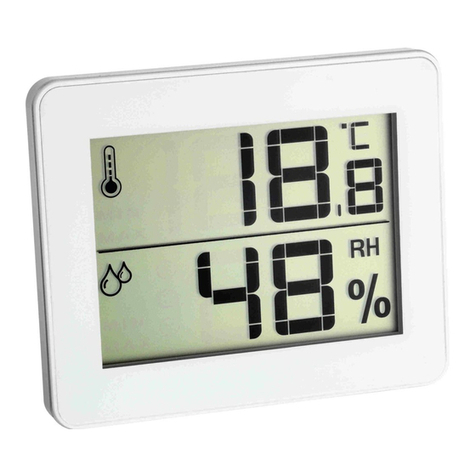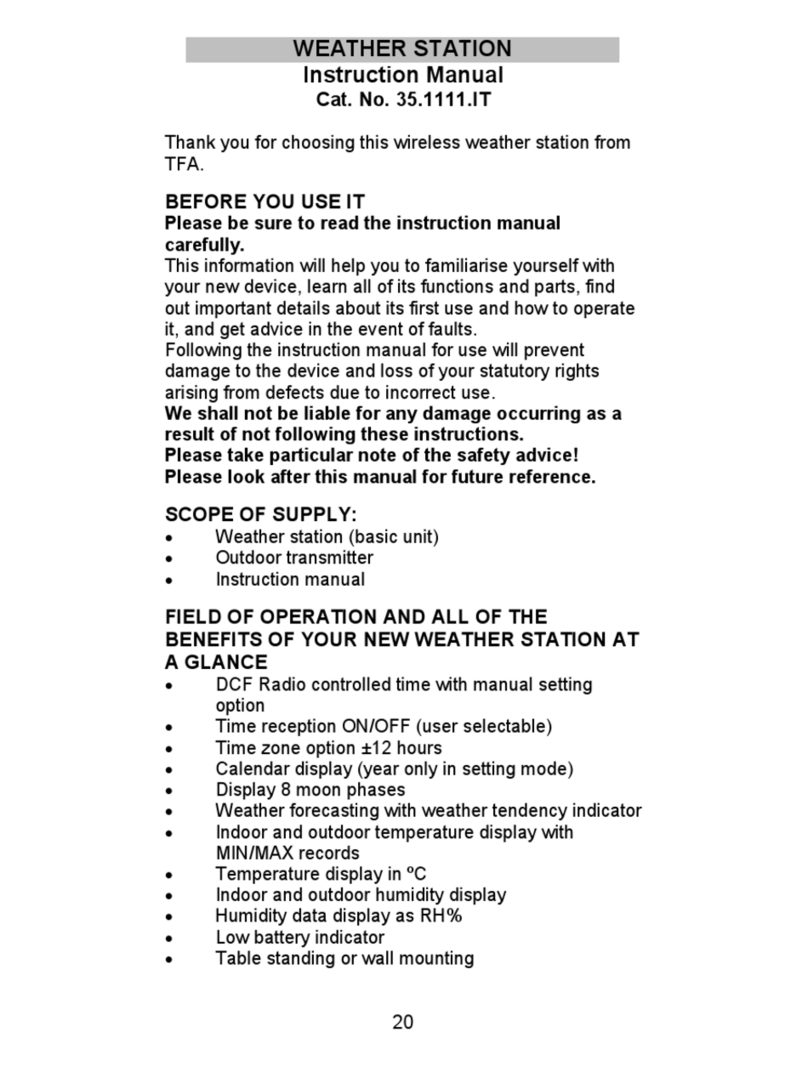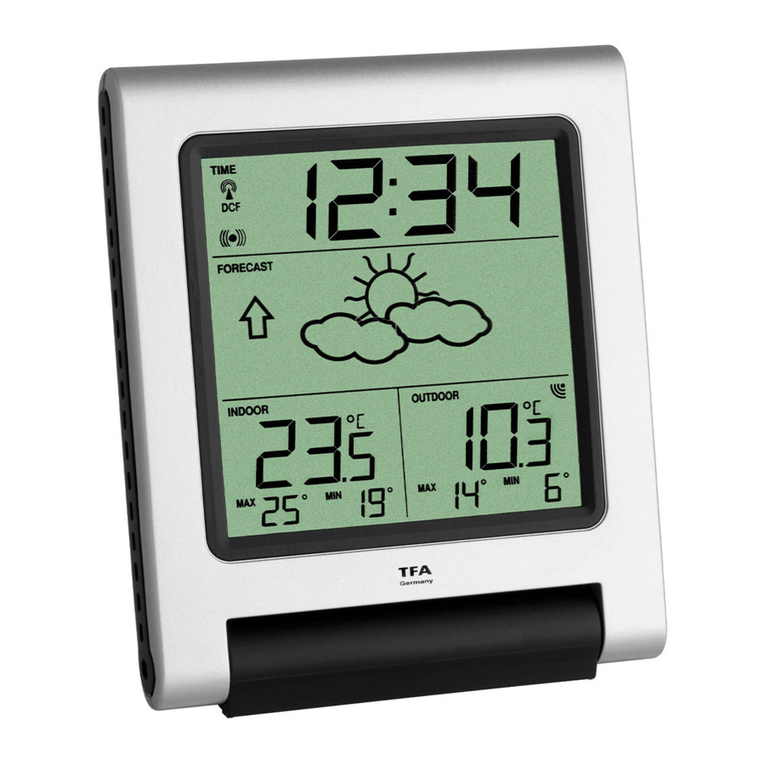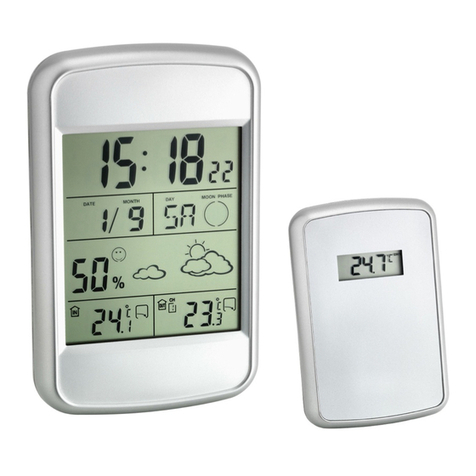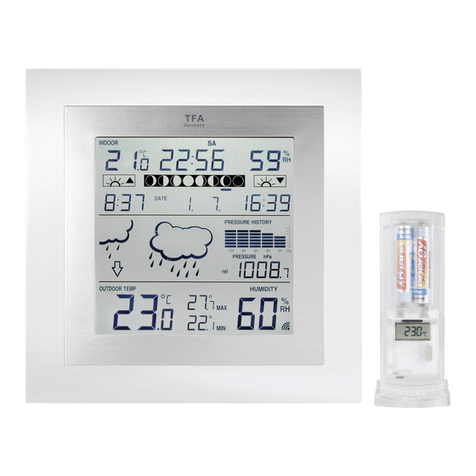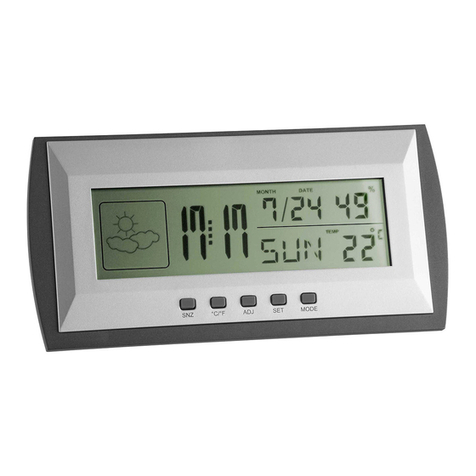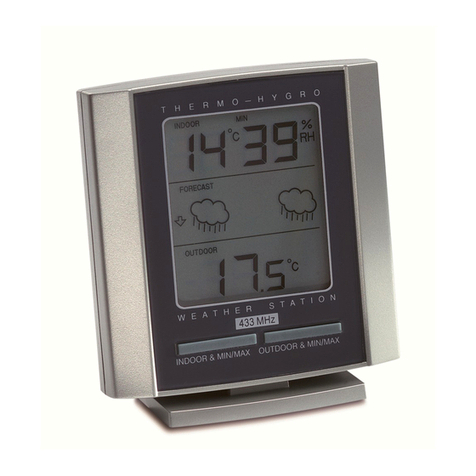
41
5. Once the remote temperature has been received and displayed on the weather station, the
DCF time (radio controlled time) code reception is automatically started. This takes typically
between 3-5 minutes in good conditions.
DCF RADIO CONTROLLED TIME
The time base for the radio controlled time is a Cesium tomic Clock operated by the Physikalisch
Technische Bundesanstalt Braunschweig which has a time deviation of less than one second in
one million years. The time is coded and transmitted from Mainflingen near Frankfurt via frequency
signal DCF-77 (77.5 kHz) and has a transmitting range of approximately 1,500 km. Your radio-
controlled weather station receives this signal and converts it to show the precise time in summer
or wintertime.
The quality of the reception depends greatly on the geographic location. In normal cases, there
should be no reception problems within a 1,500 km radius of Frankfurt.
DCF reception is done twice daily at 02:00 and 03:00 am. If the reception is not successful at
03:00 am, then the next reception takes place the next hour and so on until 06:00am, or until the
reception is successful. If the reception is not successful at 06:00 am, then the next attempt will
take place the next day at 02:00 am.
If the tower icon flashes, but does not set the time or the DCF tower does not appear at all, then
please take note of the following:

